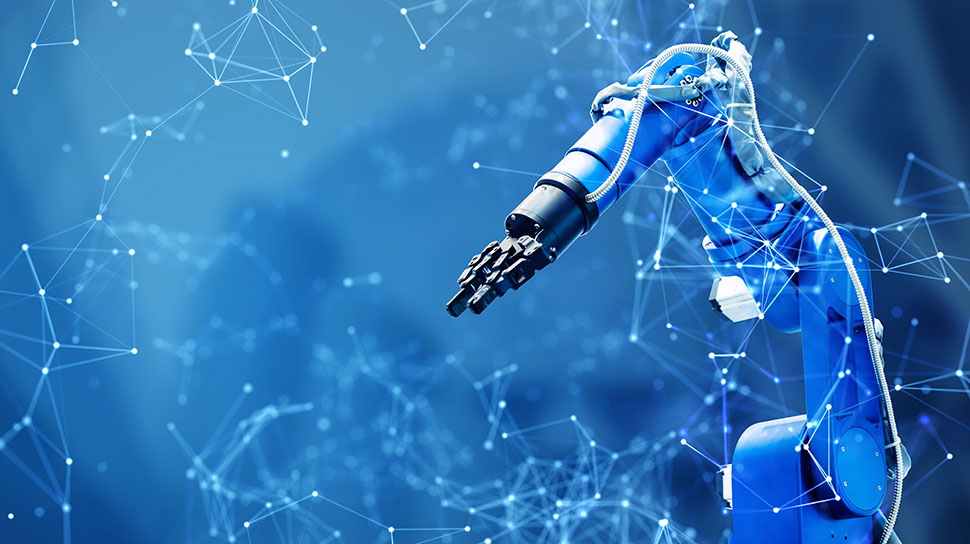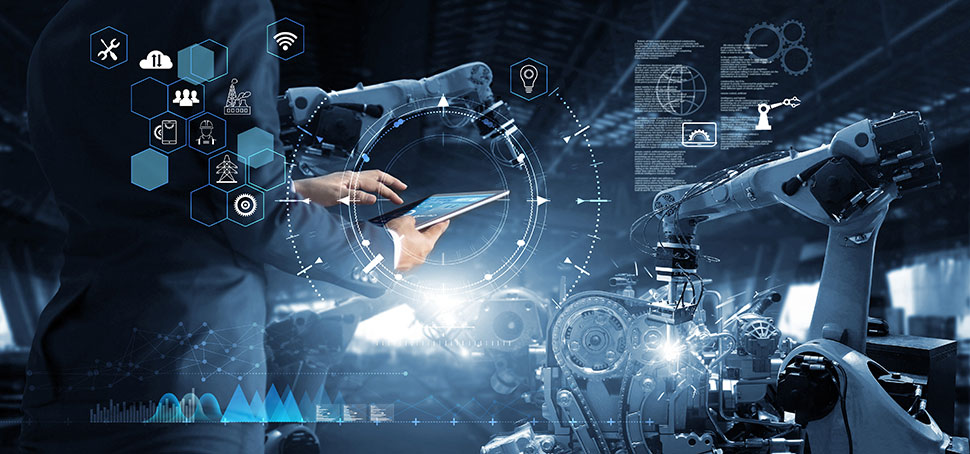September/October 2021 | Vol. 26 No. 5
Editor’s Note: Turning the potential of Artificial Intelligence (AI) into business value at scale brings many challenges, some of which are more human than technical. To explore these issues, Siemens partnered with Longitude Research to survey over 500 senior executives. Their responses offer unique insight into the future of industrial AI. Here is an excerpt from the study.
Heavy industry companies—those in manufacturing, engineering, metals, textiles, chemicals, and related sectors—boost efficiency, safety, profitability, sustainability, innovation, strategy, and more by pioneering advanced automation and analytics.
Now, manufacturers are in different stages of Industry 4.0, which includes integrating physical and digital assets and using sensors, connectivity, robotics, computing power, and operational models and innovations that combine human ingenuity and automation.
Artificial intelligence—which employs human-like, adaptable capabilities and helps us analyze data collected from machines, processes, assets, markets, and the environment—is a principal player in Industry 4.0.
So, how do manufacturers benefit from AI now? How quickly will organizations change to accommodate more AI-driven operations? And how will industrial companies deal with issues of trust, governance, safety, and cybersecurity?
To answer these and other questions, Siemens surveyed 515 senior leaders who have some responsibility for, involvement in, or knowledge about their organization’s existing or planned use of AI. Following are insights from the 158 industrial sector respondents.
So far, industrial companies have seen only modest benefits from AI, with leading use cases providing a significant or moderate benefit for less than a third of companies. Those use cases include systems that:
- Intelligently optimize systems automatically (30 percent experienced a major or moderate benefit)
- Provide market or system forecasts (30 percent)
- Automate and/or improve quality control (30 percent)
- Improve existing products and services (29 percent)
- Identify risks/issue warnings (27 percent)
- Predict asset maintenance needs (25 percent)
In all the cases above, between 77 percent and 84 percent expect a major or moderate benefit in just three years. Part of this expected growth will be down to the increasing accessibility of AI, particularly for companies that do not have specialist AI capabilities.

Only 44 percent of respondents have an in-house team building customized AI-driven solutions, but many are taking advantage of products with AI functionality.
For example, neural network processors are being built into machine control modules, which means companies can buy “off-the-shelf” visual or auditory discrimination tools (for example, for quality checks or process monitoring).1
New Opportunities Where Context Matters
AI applications are developing rapidly, and as industrial companies increase their adoption, the next generation of innovations and applications will create new opportunities.
Advances in the way data is managed, generated, represented, and shared drives innovation.
“AI is about generating value from data,” says Norbert Gaus, Head of R&D for Digitalization and
Automation at Siemens. “It is driven more by data than by technology.”
Sometimes, it will be advances in how manufacturers represent, blend, and manage data that will lead to AI breakthroughs. Knowledge graphs are one example. Often visualized as giant spider diagrams, knowledge graphs capture the meaning of, and relationships between, items in diverse data sets.
“Knowledge graphs add context to the data you’re analyzing,” says Gaus. “For example, machine data can be analyzed in the context of design data, including the tasks the machine is made for, the temperatures it should operate at, the key thresholds built into the parts, and so forth. To this, we could add the service history of similar machines, including faults, recalls, and expected inspection outcomes throughout the machine’s operational life. Knowledge graphs make it much easier to augment the machine data we use to train AI models, adding valuable contextual information.”
What kind of contextual data would be most useful? According to the survey, it’s:
- Performance data from sold products in use with customers (75 percent)
- Data from suppliers (71 percent)
- Internal data from other divisions, regions, or departments (70 percent)
- Data from manufacturers of equipment or assets (67 percent)
AI Is a Powerful Tool
A company that uses knowledge graphs to bring these kinds of data together would train a single AI model with information about the life of previous products, operational inputs, variables, and dependencies. The AI model could identify valuable patterns and clusters in this diverse dataset, which could drive better predictions, valuable ideas, new efficiencies, and more powerful automation.
Even the respondents’ top choice alone could be transformative for AI applications. Performance data from sold products can complete feedback loops that have historically been hard to close.
“This would help us understand, for example, whether something was poorly designed, whether something went wrong in the manufacturing process, or if customers are using the product in unforeseen conditions,”1 says Gaus. “Perhaps the design makes manufacture complicated, which affects durability
in certain conditions. Having these feedback loops automatically flow back from the whole product lifecycle could help us isolate issues and improve products. For some organizations, this could be game-changing.”

AI and Big Decisions
The advance of AI brings with it new challenges for industrial companies. One of the most interesting is how much confidence to have in the results, insights, and decisions generated by AI, especially when the stakes are high.
To explore this, we asked the survey respondents to imagine that their organization had installed a brand- new AI model called Maintain-AI, which had been trained on 20 years of performance data from their machinery manufacturer. We told them that Maintain- AI had recommended immediate lengthy, high-cost, disruptive refurbishment work on necessary machinery but that their head of operations—with 20 years of industry experience—strongly disagrees. Having inspected the machinery, the head of operations says the work would be an unnecessary waste of time and money.
The 158 industrial company respondents considered this scenario, and a modest majority (58 percent) said that their organization would side with Maintain-AI, which suggests many are open to trusting in the results of AI-driven analysis.
However, it is important to point out that we told respondents that Maintain-AI had outperformed the organization’s best people in a yearlong pilot before the refurbishment recommendation. With that in mind, the fact that a sizeable group (42 percent) still opted to go with the head of operations is more concerning: It indicates a potential bias against AI that could stop some companies from progressing.
Falling Barriers, Rising Benefits
The relatively high proportion that opted not to trust AI in our hypothetical scenario could be attributed to industrial companies’ top barriers to progress with AI. Cybersecurity risks and liability risks are both cited as major or moderate barriers by 80 percent of respondents. However, things may be about to change. Both these barriers are expected to fall within the next three years—to 52 percent and 40 percent, respectively.
Overall, our research shows that the industrial sector is optimistic about AI, with a clear majority (60 percent) reporting that their organizations are eager to use as much AI as possible. With barriers expected to fall as swiftly as benefits are expected to rise, we may be about to see the next generation of AI emerge as the star of Industry 4.0. ei
-------------------------------------------
1 https://press.siemens.com/global/en/pressrelease/artificial-intelligence-simatic